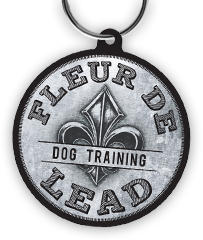"Real Life" Training
One of the mistakes we often make with our dogs is thinking that dogs see training classes in the same way that we often see being in school—in other words, that learning is reserved for the classroom!
In truth, dogs (and people) are constantly learning every second of every day. To have a truly well-mannered dog, you need to reinforce the behaviors that you want during the course of your daily life. “Use It or Lose It!” is a good maxim to follow when teaching your dog new behaviors. Here are some ideas on how you can involve “real life” in your training practice:
Take your dog with you when you go shopping.
There are many stores that allow dogs. Always call first to make sure of their dog-friendly policies. Examples of stores that allow dogs in are garden/nursery stores, camping/outdoor gear stores, home improvement stores, pet supply stores, some restaurants and coffee shops with outdoor eating areas, and “specialty” pet food stores such as dog treat bakeries. Once you are in the store, you can practice walking nicely on leash, sitting politely for petting and no jumping, and even stays in the aisles or under your chair or table if you are sitting and having a cup of coffee. You can also practice having the dog stay before getting into your car and before jumping out, and while you are loading any goodies you’ve purchased from the shopping cart into your car.
Take your dog on car rides.
Even if you have a quick errand to run, such as to the bank or to a drive thru restaurant for food, take your dog along! You can practice stays with the dog getting in and out of your car, and going out is always a good socialization opportunity for the dog. Some drive thru establishments even keep jars of dog treats on hand to say “hello!” to new canine visitors.
Practice sitting politely...
when guests come over every time a friend or relative visits. Practice sit stays when the mailman drops off your daily mail, when the garbage collection truck comes by, and when the newspaper deliveryman drops off your paper.
Practice sit and down stays...
while you are watching TV, on the phone, cooking, eating dinner, working at home on your computer, or while your children are doing their homework. The dog learns to be quiet and relaxed during times that you are busy and need to work, and it doesn’t require much extra effort on your part to train the dog while you are doing other things.
Practice stays when you go to pick your children up from school or from extracurricular activities.
Arrive a few minutes early and take your dog out on leash and have them stay while watching the busy parking lot full of children. This is a highly distracting atmosphere for the dog and it’s great practice for stays, as well as walking nicely on leash.
Use the recall command in your house...
in the course of your daily activities, such as when you want the dog to come to eat his or her dinner, or when your dog runs to the front door or a window to bark at a squirrel or the mailman.
Use all of your dog’s behaviors to earn him “what he wants.”
Make getting anything that your dog desires a learning opportunity! If your dog wants to go out, he has to sit for his leash to be put on, or lay down at the door, or do a trick instead. Do the same when your dog wants his dinner, or to play or be petted or get attention. It doesn’t really matter what behavior you ask for, as long as you ask the dog to do “something” in exchange for a valuable “life” reward.
